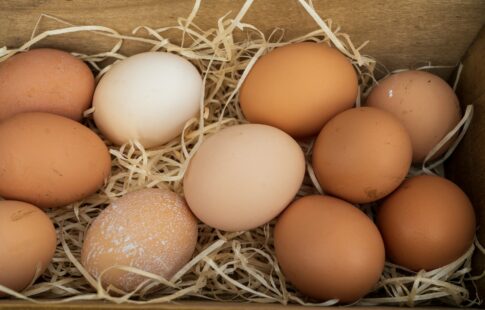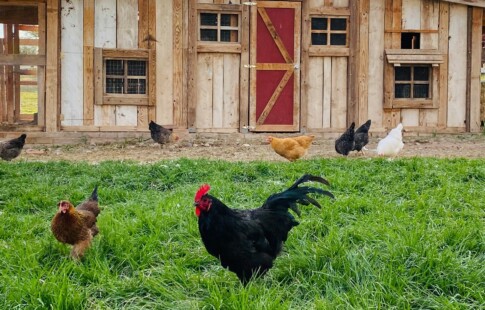
8 Tips for Getting Started With Permaculture Farming
We are reader-supported. When you buy through links on our site, we may earn affiliate commission.
If you own a homestead, you could head to the nursery every year, restocking your plants and dropping a small bundle for fertilizer. However, doing so isn’t the most environmentally conscious choice, nor is it economical. Have you considered getting started with permaculture farming instead?
This agricultural style involves operating how nature intended, completing the life cycle by adopting renewable energy and recycling and repurposing materials. It can save money and the planet. Intrigued? Here are eight tips for getting started with permaculture farming.
1. Stop and Think
Permaculture farming is a highly mindful activity, requiring you to reflect on what you hope to accomplish and the best way to do so while minimizing your impact on the environment. Which crops provide your family with the most pleasure and nutrition while reducing water consumption? How can you divide your various garden plots to make the highest and best use of available sunshine and shade?
Take your time planning for permaculture farming and get creative. You want something sustainable but also suited for your lifestyle. For example, planting labor-intensive crops might delight family members who enjoy rare treats but could take up valuable space for growing something with a better chance of producing a useful yield.
2. Build a Better Compost Bin
A standard feature of many permaculture homesteads is the compost bin. This device enables you to convert organic food scraps into rich soil to replenish the nutrient content of your plots without chemical fertilizers.
This practice helps the planet in two ways. It reduces the amount of waste flowing into landfills each year, including plastic, if you use such bags to manage your household waste. Furthermore, it helps reduce soil depletion, a severe problem contributing to decreasing nutritional values of produce each year. Chemical fertilizers add nutrients but contribute to cultural eutrophication when they run off and enter waterways.
Fortunately, it doesn’t take much effort to build a compost bin. A sealed plastic container works well for balcony gardeners with only a few container plants to maintain. Larger homesteaders can construct models out of leftover pallets available for free at many hardware stores.
3. Make Slow, Steady Changes
There’s no need to rush your permaculture conversion. The beauty of this agricultural style is how it renews year after year, meaning the improvements you invest in now will last until you get around to tackling the rest.
Therefore, you might start with a small compost bin and add to it. Perhaps you’ll convert half of your landscape irrigation system to solar power one year and complete the project the next.
4. Keep the Buddy System in Mind
Part of permaculture farming entails minimizing or eliminating pesticide use. After all, mother nature doesn’t spray the forest with toxins to eradicate insects, and people found plenty to eat long before humans invented agriculture. Some plant species form symbiotic relationships in the natural world, protecting each other from various pests.
For example, many herbs make excellent companion plants to deter pests from your tomatoes or peppers. Garlic and rue keep Japanese beetles from devouring your rose bushes, protecting your fresh crop of vitamin-C-rich hips. Borage and pot marigold keep hornworms from infesting your tomatoes.
5. Variety Is the Spice
Look around your nearest local green area. You won’t see only one species of plant, even if your HOA manicures such locations. Planting various species helps preserve soil nutrients and ensures a viable crop of one or two items if unfavorable environmental conditions wipe out the rest of your harvest.
Therefore, go crazy with variety. Leave no corner of your homestead unplanted, but stay away from useless crops like grass unless you need a patch to build a dog run. Look for free additions wherever you can find them. For example, save the seeds from any produce you pick up at the farmer’s market and swap herb cuttings with friends.
6. Think Native
Permaculture farming and xeriscaping go hand in hand. What is the latter? It involves using native plants to minimize water use and maintenance needs.
You might find some crops provide both beauty and utility. For example, many species of amaranth grow wild across the southwest, the red springtime blooms giving way to ancient grains that make an excellent alternative to wheat for folks with gluten intolerance.
7. Minimize Water Needs
Choosing native plants isn’t the only way to minimize your water needs. You can also make strategic use of shade to reduce usage.
For example, plant the hardiest full-sun plants in your property’s south and east sectors, populating the periphery with those that prefer partial shade. Save the north sector for species that prefer full shade.
8. Create Heirloom Collections
What is an heirloom tomato? It shares a common lineage with its ancestors, resulting from seeds from the same plant used year after year.
Heirloom collections take advantage of genetic variations, preserving those types that thrive best in your specific soil and environment. Additionally, you can guarantee they aren’t GMO.
Getting Started With Permaculture Farming
Agriculture can be an expensive hobby if you use non-sustainable practices. It also takes a toll on the environment.
Instead, follow the tips above to get started with permaculture farming. You’ll keep more green in your pocket and preserve the planet we all share.
Share on
Like what you read? Join other Environment.co readers!
Get the latest updates on our planet by subscribing to the Environment.co newsletter!
About the author
Steve Russell
Steve is the Managing Editor of Environment.co and regularly contributes articles related to wildlife, biodiversity, and recycling. His passions include wildlife photography and bird watching.





